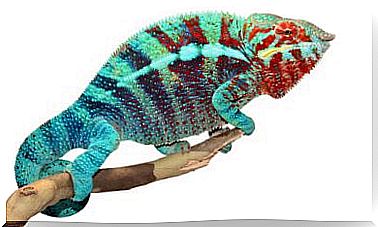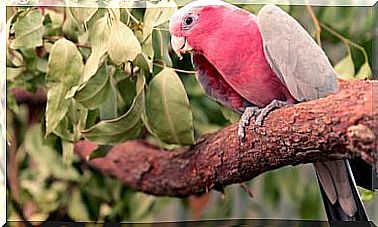The Bioluminescent Squid, An Example Of Symbiosis
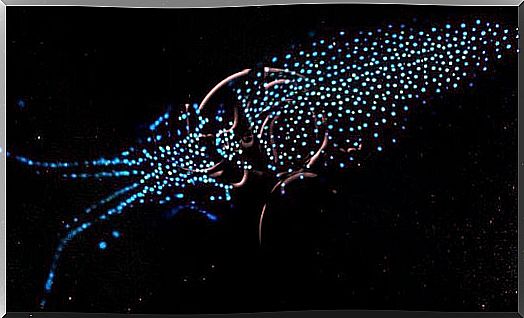
The Vibrio fischeri is a bacterium that emits light in a bioluminescent organ squid. In return, the bioluminescent squid offers you protection and nutrients. This is a good example of syombiosis that we can find in the animal kingdom.
Beneficial microbes play a critical role in the health of the organisms they infect, including humans.
Microorganisms are capable of colonizing any habitat, from the deepest marine waters to the gastrointestinal tract of mammals.
In many of the interactions that occur between an organism and a bacterium , a symbiosis is established in which both species obtain benefits. As is the case with the microbiota or microbiome.
So, symbiosis is a very widespread phenomenon in the animal world. Next, we will tell you the curious case of the mutualistic relationship that exists between the bacterium Vibrio fischeri and the bioluminescent Hawaiian squid ( Euprymna scolopes) .
Vibrio fischeri
V. fischeri is a marine bacterium, belonging to the Vibrionaceae family , which can be found free or associated with a host. There are different bioluminescent strains that establish mutualistic relationships with squid and some marine fish.
Often, V. fischeri is used as a model organism to study the role of metabolism of symbiotic bacteria.
Quorum sensing (QS)
As you already know, bacteria are single-celled beings. Years ago it was thought that they only carried out simple and individualized processes. However, they are capable of interacting collectively, as if they were a multicellular organism. In this way, they coordinate processes such as bioluminescence, biofilm formation , cell development and differentiation, or virulence.

Quorum sensing , or quorum-like mechanism, is an example of communication that occurs between bacteria.
It is based on the detection of an environmental signal or substance and on the response to said modification, to achieve complete adaptation and survival, through changes in gene expression.
So this procedure allows synchronizing the behavior of the bacterial population, but for this there must be a high number of bacteria.
Therefore, the production of light in V. fischeri is controlled by the QS mechanism and for it to be carried out, as we have already mentioned, it is necessary to have a high density of bacterial population.
Symbiosis between V. fischeri and E. scolopes
As we already know, bacteria have the ability to adapt to a wide variety of environments, thanks to the fact that they perceive their environment and respond to it.
To do this, they recognize extracellular signals and activate intracellular pathways, which leads to activating mechanisms for regulating gene expression.
Beginning of the symbiosis
When the eggs hatch, the young of E. scolopes do not have these bacteria inside, but they obtain them from the marine environment within a few hours. From that moment on, they maintain the symbiosis throughout their lives.
The light organ (light organ) is not exposed in direct contact with sea water, so E. scolopes ventilates the water and any bacterial cells to this organ.
In addition, it has a physiology that allows entry and permanent colonization by V. fischeri . At the same time, it excludes all other species found in the sea.
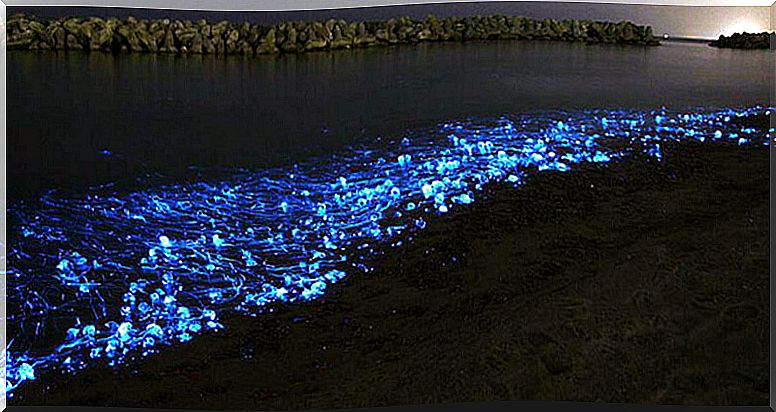
During the transit from seawater to the light-emitting organ, these bacteria must pass through different microenvironments within the host. On the other hand, they must overcome different chemical signals, which ensures the specific colonization by these bacteria.
The V. fischeri bacteria pass through ducts of the organ of light and migrate to the crypts, where colonization is established.
In these crypts, they must reach a high cell density and produce light. The cilia, which are present in the appendages of the tissues of the light organ, help to direct the bacteria to their surface.
What are the benefits of bioluminescent squid and V. fischeri ?
V. fischeri is the marine bacteria that colonizes the bioluminescent organ of these cephalopods. Once there they establish a symbiotic relationship:
- during the night the bacteria is protected in a niche, where it also obtains the nutrients it needs;
- meanwhile, the squid uses the light generated by the population of V. fischeri to go unnoticed by predators, since at that moment, it simulates the light of the moon, and that is when it takes advantage of it to feed.
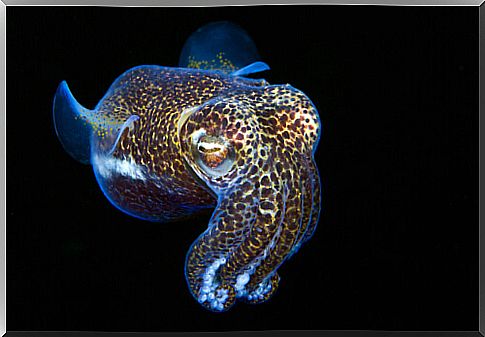
Every day at dawn, the squid expels 95% of the symbiont bacterial population into the environment. The rest, which has remained in the organ of light, take advantage to multiply.
Meanwhile, the animal remains buried in the sand for the rest of the day. At night, the bioluminescent squid emerges and the bacterial population has already grown enough to produce light.
Bacteria to understand life
The study of this symbiotic interaction has been used as a model to understand the host-microorganism interaction in recent decades. In addition, it helps to understand how the symbiosis works from the early stages of colonization, until the rest of the animal’s life.
Finally, it is interesting to highlight how bacteria, which comprise this microscopic world, have a fundamental role in the animal kingdom. It is true that they are the cause of numerous infections and diseases, however, it does not cease to amaze us to what extent they are necessary for life.
Cover: Bioluminescent Squid from Tojama (Japan) | Pinterest.



